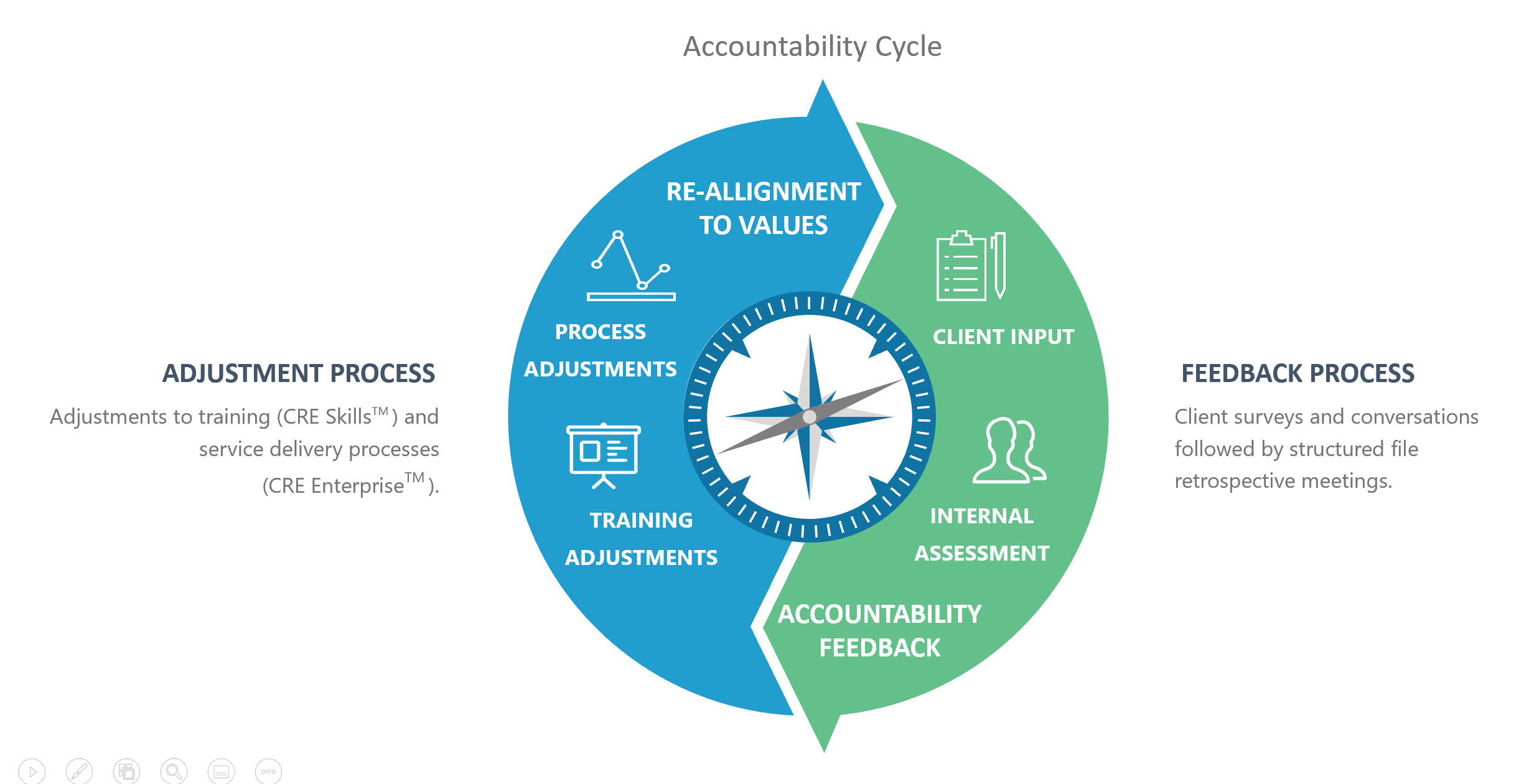Dennis Aubin, February 8, 2021
When it comes to values, it should look like you have some.
But what’s the point, really, if they’re just another poster hung on the wall?
Done right, it means an aligned group of people working towards a common cause; but can you make it a System, one that continually monitors that alignment?
Values as good marketing
Countless stories have been written over the past decades about values-based organizations and how they achieved success. Books were read, articles written, and cultural norms began to make it an expectation that a company would have a statement of values that guide it.
It follows that, as management fads go, values got cool. Focus groups were summoned, committees struck, and a company can then reveal its values to the world.
The problem comes when those values fail to reflect the true culture of the organization or its commitment to being guided by them. When in fact, demonstrated behaviors have no link at all to the values that are supposed to guide them, and no expectation of accountability for when this happens. An article in the Harvard Business Review by Patrick Lenioni does a great job of describing this problem.
I call it the “Values Trap”, and the first step out is a commitment not to use your value statements as a marketing tool. Make them public, but not publicised. The next is to find an authentic way to link them to behaviors and define what accountability means to you.
Values that guide behavior
The root of making your value statements meaningful is to identify behaviours that exemplify those values day-to-day. These “behaviors” are the actions, decisions, and words you use. Upon examination you need to be able to draw a line either towards or away from your stated values. This is much easier said than done as you get into grey areas of subjective judgment, and the nuances of different people’s perspectives.
And how do you turn an examination of behavior into useful information? How can you quantify something so subjective?
Certainly the blatant transgressions are easy to spot . A bald-faced lie is clearly off the mark if one of your values is “Honesty”. With some questions you can get to a yes or no answer. For the rest you have to expand your data set , and collect feedback from enough sources that you start to see a trend that you can quantify.
How to measure what really matters
As the saying goes, what gets measured gets done. So how do you measure adherence to values? I believe its possible if you open yourself up to feedback, both external and internal, that brings you the answers over time. You have to create a continuous feedback loop with people on the outside and inside of the organization.
This means asking questions. Not “hey, are my values good?”, but ones designed to capture a view of result achieved (or not), and the manner in which that happened, that also have a correlation to your core values.
There is a big challenge here. Often results can be achieved without that linkage to values, or even in direct conflict with them. But the “how” matters. Inevitably you’re going to capture feelings about how things were done.
Sometimes, you’re going to have to examine why things didn’t get done. Why results were not achieved. Did that happen because you strayed from your values, or held to them? Did they cost you something?
Its also true that no examination of a single event (especially one that captures “feelings”) is going to give you the information you need. There will have to be sufficient information captured to show a trend, and accumulate it over time. The specific examination process also has to be time-based, or have event triggers that will be there keep the process in motion.
Designed well, and consistently applied over time, this feedback mechanism can be scaled to form actual metrics that you can track .
Values as a management system
Lets say you can capture the behaviours that exemplify your values and have measured some metrics, the question becomes: What do you do with that?
Assuming the answer is “something”, this knowledge needs to find its way back into the organization. Specifically, into its learning and processes. Training adjustments are made to address the core competencies required to help people seek results in a way that aligns with your values. Process adjustments are made to include steps that are consistent to the company’s objectives. Here is a graphic that illustrates this feedback loop:

So what happens when something goes wrong? When there is a consistent pull against the values of the organization.
“Values with Teeth”
The hardest part of sticking to your values is when it’s going to actually cost you something. There has to be a willingness to apply consequences to behaviours that pull an organization away from its core.
This is where I have seen, and occasionally been guilty of, definite failures to “practice what you preach”.
And also where I still have the most questions.
How far are you willing to go? Is there a link to compensation? Or who is a member of your team? Is this even possible for smaller organizations, or only at large organizations with redundancies? How do you apply this as a positive reinforcement loop and not an oppressive “Big Brother” exercise?
With this framework I’d like to answer these questions over time, and in a line pulled from “The Culture Code” by Andrew Coyne: “the goal here is not precision but to create awareness and alignment to direct behavior toward the group’s mission.”
I know I might be re-inventing the wheel here, but needed to work through it myself, and I’d be grateful for any tips you’ve learned along the way.


Recent Comments